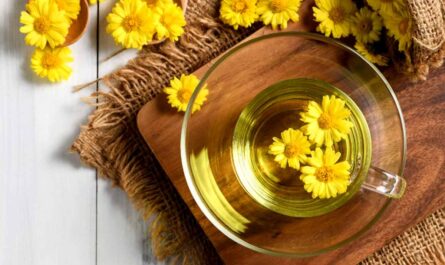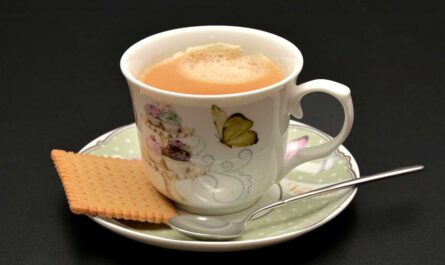Darjeeling tea vs black tea: what are the comparison, and differences? Have you ever experienced a sip that transported you to a misty mountaintop, the crisp air infused with the subtle sweetness of blooming flowers? This is the magic of Darjeeling tea, a unique and captivating member of the black tea family. Yet, the world of black tea boasts an incredible diversity, offering a spectrum of flavors and experiences waiting to be explored. Today, we embark on a delightful journey, comparing and contrasting Darjeeling with its black tea brethren, guiding you towards discovering the perfect cup to match your taste preferences.
Darjeeling, often referred to as the “Champagne of Teas,” hails from the foothills of the majestic Himalayas in India. This region’s unique combination of cool mountain air, fertile soil, and meticulous hand-picking techniques results in a tea unlike any other. Darjeeling’s delicate leaves brew into a pale golden liquor, possessing a distinctive muscatel flavor – a subtle hint of grape that mingles with floral and slightly astringent notes. Its light body and refreshing finish make it a true delight for tea connoisseurs worldwide.
Black tea, on the other hand, is a broader category encompassing a vast array of flavors and origins. From the bold and malty Assam to the smoky and complex Lapsang Souchong, each region and processing method contributes to the tea’s unique character. Unlike Darjeeling, black tea undergoes a process called full oxidation, where the leaves are exposed to air for an extended period. This results in a darker-colored liquor with a stronger, more full-bodied taste compared to Darjeeling’s delicate profile.
So, which tea should you choose? The answer, like most things in life, lies in personal preference. If you seek a subtle and nuanced experience, with hints of floral sweetness and a light body, Darjeeling might be your perfect match. However, if you enjoy bolder flavors, a deeper body, and a wider variety of taste profiles to explore, the world of black teas awaits.
Throughout this article, we will delve deeper into the unique characteristics of both Darjeeling and black teas, exploring their brewing methods, flavor profiles, and potential health benefits. We will also equip you with helpful tips and recommendations to help you embark on your tea-tasting adventure and discover the perfect cup to tantalize your taste buds. So, brew yourself a cup, settle in, and get ready to be swept away by the fascinating world of tea!
Unveiling the Secrets of Black Tea: A Transformation of Time and Science
Black tea, with its characteristic dark color and robust flavor, undergoes a fascinating process called oxidation. Imagine this: freshly plucked tea leaves, still brimming with life, are spread out in a cool, controlled environment. As time passes, oxygen interacts with the leaves, triggering a series of chemical reactions. These reactions cause the leaves to darken, their initial grassy notes slowly transforming into the rich, complex flavors we associate with black tea.
This process of oxidation also impacts the caffeine content in the leaves. Generally, black tea boasts a higher level of caffeine compared to other tea varieties like green tea. So, if you find yourself needing an afternoon pick-me-up, a cup of black tea might just be the answer!
The world of black tea is a diverse tapestry, woven with countless regional variations, each boasting its unique character. Let’s briefly explore some of the most popular black tea varieties:
- Assam: Hailing from the lush valleys of Assam, India, this bold and malty black tea is a favorite amongst many. Its robust flavor profile makes it a perfect companion for a hearty breakfast or a delicious afternoon snack.
- Ceylon: This vibrant black tea, originating from the sun-drenched island of Sri Lanka (formerly Ceylon), is known for its bright and citrusy notes. Its refreshing taste makes it a perfect choice for a hot summer day or an invigorating start to your morning.
- Keemun: This gem from China’s Anhui province offers a unique flavor profile, characterized by its sweetness and subtle smokiness. Keemun is often described as having a complex yet delicate taste, making it a favorite amongst tea connoisseurs.
- Earl Grey: While technically a black tea base, Earl Grey deserves a special mention. This iconic tea is distinguished by the addition of bergamot oil, an essential oil derived from the bergamot orange. The resulting brew boasts a distinctive citrusy aroma and flavor, making it a delightful and refreshing choice.
Whether you’re a seasoned tea aficionado or just beginning your exploration, these popular black tea varieties offer a taste of the diverse and delicious world of tea. So, the next time you reach for a cup, take a moment to appreciate the fascinating journey the leaves have undergone and the unique flavor profile they offer. In our next chapter, we’ll delve into the world of Darjeeling tea, exploring its special characteristics and the reasons why it’s often referred to as the “Champagne of Teas.”
Distinctive Darjeeling: What Makes it Special?
The Himalayan Factor: Unlike many black teas, Darjeeling boasts a unique heritage, nestled amidst the breathtaking beauty of the Himalayas. Imagine lush green slopes cradling tea plantations, bathed in the cool mountain air and kissed by the gentle Himalayan mist. This unique “terroir,” a combination of geographical location, climate, and soil composition, plays a significant role in shaping Darjeeling’s distinctive character. The high altitude allows slower growth, leading to the development of delicate, nuanced flavors in the tea leaves. The cool mountain air further contributes to this finesse, creating a refreshing and invigorating experience.
Flushing Seasons: Darjeeling’s journey unfolds throughout the year, marked by distinct “flushes” or harvest seasons. Each flush brings its own unique personality to the teacup. The first flush, harvested in early spring, is often hailed as the “crown jewel” of Darjeelings. Imagine delicate, pale-colored leaves yielding a light, brisk cup with floral notes and a hint of astringency. The second flush, harvested in summer, offers a fuller-bodied experience, boasting richer color and pronounced notes of muscatel, a grape-like sweetness reminiscent of certain wines. As the seasons progress, the teas develop bolder characteristics, with later flushes presenting a deeper color, stronger flavor, and a malty aroma.
The Muscatel Mystique: One of Darjeeling’s most captivating characteristics is its distinctive “muscatel” flavor. This elusive quality, often described as reminiscent of sweet wine grapes, adds a touch of magic to the tea-drinking experience. While the exact origin of this unique note remains a subject of debate, some attribute it to the specific tea plant varietals used in Darjeeling, while others believe it arises from a combination of factors, including the unique terroir and specific processing techniques.
Leaf Grades and Processing: Darjeeling tea leaves come in various grades, each impacting the final brew. Whole leaf teas, consisting of unbroken leaves, offer a superior experience, yielding a full-bodied and nuanced cup. Broken leaf teas, while offering a slightly less intense flavor, still deliver a delightful experience and are often used in tea bags. Fannings and dust are smaller tea particles, ideal for quick brews or adding strength to existing blends. Understanding these distinctions allows you to tailor your Darjeeling experience to your preferences, whether seeking a delicate first flush or a robust and invigorating brew.
From the majestic Himalayas to the diverse flushes and the elusive muscatel note, Darjeeling tea presents a fascinating world of its own. As you delve deeper into its unique characteristics, you’ll discover a symphony of flavors and aromas waiting to be explored, offering a truly exceptional tea experience.
Other Interesting Articles
- 19 Golden Tips Tea Health Benefits, Recipe, Time, Side Effects
- Does Drinking Black Tea After Meals Help with Weight Loss?
- 21 Temi Sikkim Tea Health Benefits, Recipe, Side Effects
- 24 Health Benefits of Drinking Green Tea After A Meal
- How Drinking Tea Can Boost Your Smoking Cessation Journey
- 19 Nimbu Tea Health Benefits, Recipe, Time, Side Effects
- 21 Proven Health Benefits of Drinking Ginger Tea Before Bed
- Disadvantages of Drinking Milk Everyday: 20 Side Effects
- 24 Proven Health Benefits of Drinking Tea After A Meal
- 26 Proven Health Benefits of Drinking Milk Everyday
- 23 Proven Health Benefits of Drinking Tea Before Sleeping
- 21 Substantial Disadvantages of Drinking Tea and Coffee
- Black Tea vs Green Tea: 15 Benefits and 11 Side Effects
- 21 Disadvantages of Drinking Green Tea on Empty Stomach
- 22 Wakoucha Tea Health Benefits, Recipe, Time, Side Effects
- 25 Silver Needle Tea Health Benefits, Time, Side Effects
- 23 White Peony Tea Health Benefits, Recipe, Time, Side Effects
- 23 Shou Mei Tea Health Benefits, Recipe, Time, Side Effects
- 23 Gong Mei Tea Health Benefits, Recipe, Time, Side Effects
- 24 Darjeeling White Tea Health Benefits, Recipe, Side Effects




